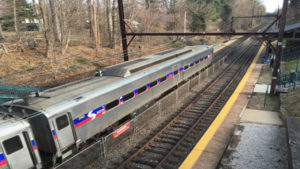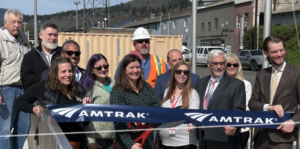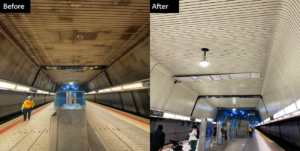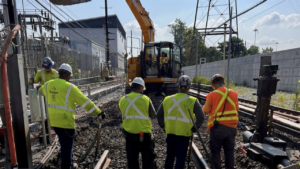Metropolitan Council releases drafts of independent freight, water reports on Southwest LRT
Written by Jenifer Nunez, assistant editorThe Metropolitan Council released two draft reports prepared by independent consultants to examine important issues that affect the proposed Southwest light-rail line serving the communities of Minneapolis, St. Louis Park, Hopkins, Minnetonka and Eden Prairie.
The draft reports includes an independent study of the location of freight rail service and an independent analysis of potential impacts on water resources with light rail operating in shallow tunnels along the Kenilworth Corridor.
The water resources draft report was conducted by Burns & McDonnell. It suggests that the conclusions of previous water studies, those conducted by the Southwest Project Office, its consultants and the Minnehaha Watershed District, are sound. Shallow light‐rail tunnels would have minimal impact on water resources. The report indicates areas where more information should be included as the project advances into the next phase of engineering and environmental assessment.
The freight rail service study was conducted by TranSystems. It reviewed nine potential alternatives for freight rail location and eliminated seven of those based on established criteria such as cost, impacts and technical feasibility. The report finds that the Kenilworth shallow tunnel option, which allows freight rail to continue to operate in the corridor, is viable. It also finds that a second alternative, referred to as MNS North, is potentially viable. The MNS North alternative has similarities to the previously considered Brunswick Central alignment, but offers adjustments to alleviate many common community concerns. Relocation of freight rail to the MNS North alternative would allow light-rail trains to run at grade through the Kenilworth Corridor.
“Our first priority was to release these reports to the public and policymakers as quickly as possible,” said Council Chair Susan Haigh. “While these reports provide additional technical information about both freight and water issues, their conclusions must undergo technical, community, fiscal and policy scrutiny. Ultimately, the tough policy decisions must still be made by project partners and the council. It is my hope that this new information will help us define the project scope and budget.”
The Southwest Light Rail Transit (LRT) Project will operate from downtown Minneapolis through the southwestern suburban cities of St. Louis Park, Hopkins, Minnetonka and Eden Prairie, passing in close proximity to the city of Edina. The proposed alignment is primarily at‐grade and includes 17 new stations and approximately 15.8‐miles of double track. Ridership in 2030 is projected at nearly 30,000 weekday passengers. The project will interline with Central Corridor LRT (Green Line), which will provide a one‐seat ride to destinations such as the University of Minnesota, state Capitol and downtown St. Paul.





